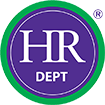Bringing a new employee into your business is an exciting process, but it requires a lot of planning. A well-structured onboarding checklist ensures new hires feel welcomed, informed and set up for success from day one. In this guide, we’ll walk through a comprehensive employee checklist for 2024, covering everything from pre-boarding to full integration into the company culture.
Pre-Boarding: Laying the Groundwork Before Day One
Successful onboarding begins before a new hire even steps through the door. Pre-boarding tasks such as preparing essential documents, setting up IT accounts, and arranging workspaces help streamline the process and ensure the employee has everything they need. Employers should also provide an onboarding schedule, outlining key meetings, training sessions and introductions while sharing the employee handbook so new hires can familiarise themselves with company policies in advance. Taking care of these logistical details early creates a seamless transition and makes a strong first impression.
First-Day Essentials: Setting the Right Tone
The first day at a new job can be overwhelming, so it’s important to make it as welcoming and structured as possible. A warm welcome from the team, an office or virtual tour and introductions to key colleagues help new hires feel comfortable. Reviewing their role, expectations and immediate priorities give new employees clarity, while an overview of essential tools, software and communication channels ensures they can start contributing quickly. A check-in meeting at the end of the day provides an opportunity to address any initial questions or concerns and reinforce that support is available.
Building a Strong Foundation Through Onboarding
Beyond the first day, the onboarding process should provide ongoing support and guidance. Training sessions covering company policies, role-specific responsibilities, and industry knowledge equip employees with the information they need to succeed. Establishing clear goals for the first 30, 60, and 90 days gives them direction and helps track progress. Regular feedback through check-ins ensures new hires are comfortable and adjusting well, while mentorship programmes connect them with experienced colleagues who can offer advice and support. A structured approach increases retention rates and helps employees reach their full potential faster.
Understanding Key Policies and Procedures
New employees must be introduced to company policies early on to prevent misunderstandings and ensure compliance. Health and safety regulations, workplace conduct guidelines, and remote or hybrid work policies should be clearly communicated. Other key areas include performance management, appraisal processes, and employee benefits. Providing easy access to these policies through a centralised portal or employee handbook allows new hires to refer back to them as needed, reinforcing clarity and consistency.
Creating a Sense of Belonging
Company culture plays a vital role in employee satisfaction and retention. Employers should take active steps to help new hires feel connected by encouraging team bonding activities, involving them in company-wide meetings, and highlighting organisational values in daily operations. Creating an open environment where employees feel comfortable voicing concerns or sharing ideas fosters engagement and alignment with the organisation’s mission. When employees feel like they belong, they are more likely to contribute positively and stay committed in the long run.
Leveraging Tools and Resources for Effective Onboarding
Technology can streamline onboarding, making it more efficient and engaging. HR software simplifies document management, payroll setup and performance tracking while learning management systems provide structured training programmes. Using the right technology ensures consistency and efficiency in welcoming new employees.
Many companies have refined their onboarding processes to enhance employee experience and productivity. Some may choose to implement structured plans that include weekly learning sessions and mentorship. These typically last 90 days or so. Others have introduced buddy systems, where new hires are paired with experienced employees to ease their transition. Fully remote companies might implement digital onboarding experiences with interactive e-learning modules and virtual team-building activities.
Addressing Common Onboarding Challenges
Even with a structured approach, onboarding can present challenges. Some employees may feel overwhelmed by too much information at once, making it essential to space out training sessions and provide written materials for reference. Others may struggle with unclear role expectations, which is why setting defined objectives and regularly checking in is crucial. Limited social interaction can also be a barrier, particularly for remote workers, but fostering virtual introductions and mentorship can help new hires integrate more easily. Ensuring IT support is readily available prevents technical difficulties from delaying productivity. By identifying and addressing these challenges early, businesses can ensure a smoother transition and greater employee satisfaction.
How The HR Dept Can Help
A well-structured onboarding process is key to employee retention and success. Here at The HR Dept, we specialise in developing comprehensive onboarding programmes that align with business needs and ensure new hires feel supported from day one. Our services include customised onboarding checklists, policy development and manager training on best practices. With ongoing HR consultancy, we help businesses refine and improve their onboarding strategies to meet evolving workforce demands.
By partnering with The HR Dept, businesses can create a seamless, engaging and legally compliant onboarding experience that benefits both employees and the organisation. If you’re ready to enhance your onboarding process, get in touch with The HR Dept today and set your new hires up for success.






